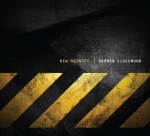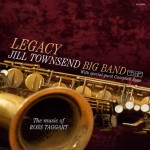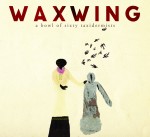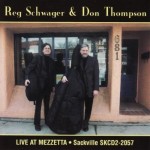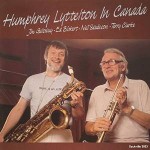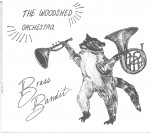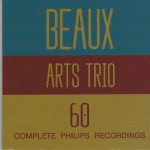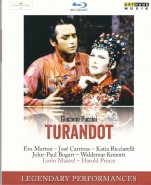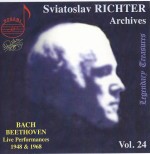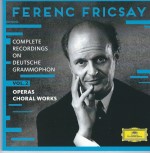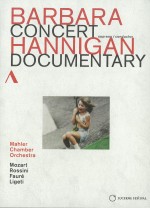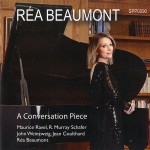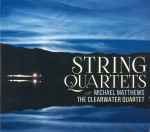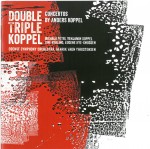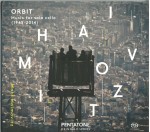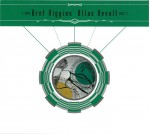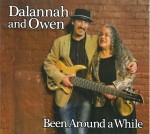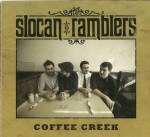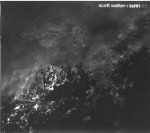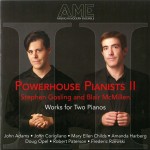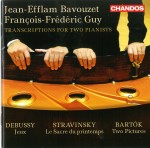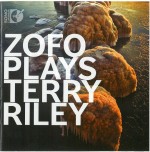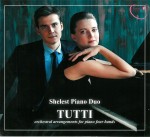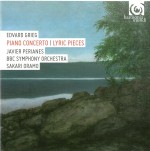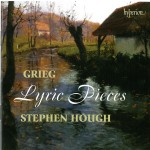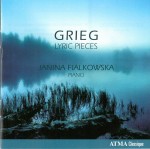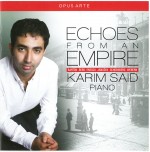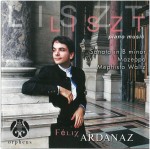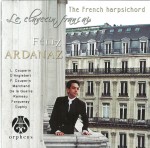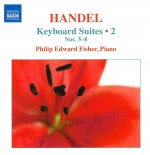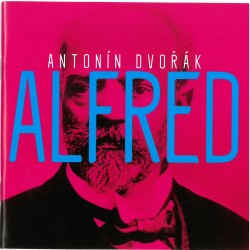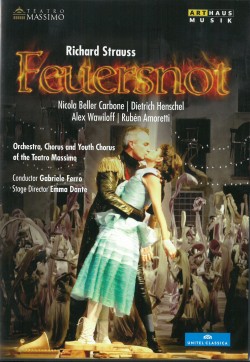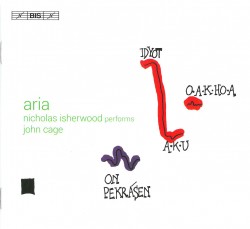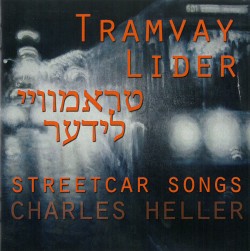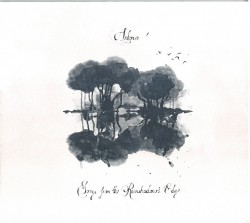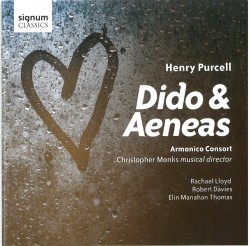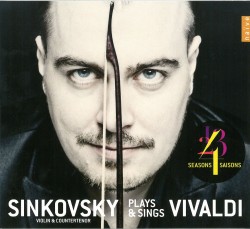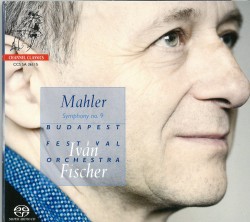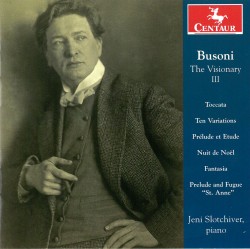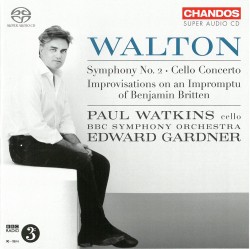Review
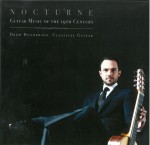
The Toronto-based Canadian guitarist Drew Henderson is probably best known as a performer as one half of the Henderson-Kolk Duo with Michael Kolk, whose Mosaic solo CD was reviewed in this column in March 2014. Nocturne – Guitar Music of the 19th Century is Henderson’s independent first solo release (classicalguitarist.ca). His playing puts me very much in mind of Kolk’s, which is saying a great deal: there’s the same outstanding technique with unerring accuracy and cleanness; a clear, rich tone across the board; lovely dynamics; virtually no finger noise; and above all a beautiful sense of line and phrase.
Henderson has chosen a varied and interesting recital program. Giulio Regondi was a child prodigy in the early 1800s, and is represented here by his Nocturne “Reverie” Op.19 and Introduction et Caprice Op.23. Henderson plays an eight-string guitar on the CD, which enables him to include the usually-omitted bass notes in Les Soirées d’Auteuil Op.23 by Napoléon Coste, who often wrote for a seven-string guitar. Four Capricci from Luigi Legnani’s 36 Capricci per la Chitarra Op.20 and a simply dazzling performance of Paganini’s Grand Sonata in A Major round out a superb disc.
The CD was recorded two years ago in the Church of St. Mary Magdalene in Toronto, with Henderson handling the recording and editing himself; he did an outstanding job. Henderson has technique and musicianship to burn, and has produced a simply terrific CD.
Listen
Nocturne 'Reverie' Op. 19, by Giulio Regondi
Capriccio No. 26 in C# Minor, by Luigi Legnani
Grand Sonata in A Major, I. Allegro Risoluto by Niccolo Paganini
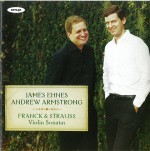 James Ehnes and Andrew Armstrong are back with another recital CD, this time featuring the Violin Sonatas of César Franck and Richard Strauss (Onyx 4141).
James Ehnes and Andrew Armstrong are back with another recital CD, this time featuring the Violin Sonatas of César Franck and Richard Strauss (Onyx 4141).
There’s a glowing, expansive opening to the Franck, especially in the piano chords as the momentum builds, and real passion in the Allegro second movement. The famous canon in the fourth movement is a pure delight. Ehnes is in his element with the big tone and strong, controlled bowing you need for the long, sustained violin phrases in this work.
Written within a year of the Franck, when the composer had just met his future wife, Strauss’ Sonata in E-Flat, Op.18 is an early work bubbling with a sense of joy and passion that both performers catch perfectly.
One short Strauss work and three song transcriptions complete the CD. The Allegretto in E is a brief but lovely piece from the last year of the composer’s life. The three songs are Wiegenlied, Waldseligkeit and Morgen!; the intricate piano decorations that run beneath the long violin line throughout the Wiegenlied are particularly lovely.
Ehnes is in superb form throughout the disc, and Armstrong is his equal in every respect.
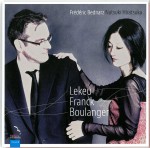 There’s another performance of the Franck Violin Sonata on a new CD featuring works by Lekeu, Franck and Boulanger from the Montreal violinist Frédéric Bednarz and pianist Natsuki Hiratsuka (Metis Islands Music MIM-0006).
There’s another performance of the Franck Violin Sonata on a new CD featuring works by Lekeu, Franck and Boulanger from the Montreal violinist Frédéric Bednarz and pianist Natsuki Hiratsuka (Metis Islands Music MIM-0006).
Guillaume Lekeu and Lili Boulanger (Nadia’s younger sister) both died at the tragically young age of 24. Lekeu’s Sonata in G Major is a fine three-movement work, with its long violin lines and agitated piano in the outer movements somewhat reminiscent of the Franck, which was written just six years earlier. Bednarz’s beautiful sweetness of tone is evident right from the start.
Boulanger was always in fragile health, and her works often seem to display her awareness of her condition. Nocturne is a simply lovely and delightful piece, again perfectly suited to Bednarz’s sweet tone. The Franck Sonata is the centrepiece of the CD, and again it’s the tonal quality of the violin playing that makes the biggest impression. Hiratsuka gives perhaps a bit less weight to the piano part in the opening movement, and there seems to be less turbulence and urgency in the second movement than on the Ehnes/Armstrong CD, but this is still a strong, musical and highly enjoyable performance.
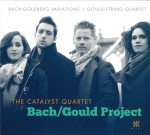 There have been several recordings of the very effective string trio transcription by violinist Dmitri Sitkovetsky of Bach’s Goldberg Variations, and now the Bach/Gould Project, the debut CD by America’s Catalyst Quartet, gives us an equally effective and satisfying arrangement for string quartet (Azica ACD-71300).
There have been several recordings of the very effective string trio transcription by violinist Dmitri Sitkovetsky of Bach’s Goldberg Variations, and now the Bach/Gould Project, the debut CD by America’s Catalyst Quartet, gives us an equally effective and satisfying arrangement for string quartet (Azica ACD-71300).
It took the quartet members a year and a half to produce their own transcription, and it’s a quite stunning achievement, with a rich, warm sound right from the opening Aria and some beautifully judged phrasing and dynamics. The up-tempo sections don’t have quite the ferocity of Glenn Gould’s approach, but there is the same exuberance and sense of sheer joy that pervades Gould’s recordings.
The decision to include Glenn Gould’s String Quartet Op.1 was a smart one. Gould wrote the work in the mid-1950s while preparing for his debut recording of the Goldberg Variations, the work that marked the beginning and the end of his recording career; not surprisingly, perhaps, it is a rich, complex single-movement quartet highly reminiscent of early Schoenberg but – as the notes point out – showing the influence of German composers from Strauss and Wagner right back to Bach. What may be surprising is that it is full of truly idiomatic string writing, with a great deal of contrapuntal voicing (no surprise there!) that is handled with great skill. It’s so much more than just a competent work or an odd curiosity, and really deserves to be heard more frequently.
A short video about the Bach/Gould Project is available on the quartet’s website and on YouTube.
 Česko is another terrific string quartet CD, this time featuring the young – and all-female – British/Dutch ensemble the Ragazze Quartet in a program of works by the Czech composers Antonín Dvořák and Erwin Schulhoff (Channel Classics CCS SA 36815).
Česko is another terrific string quartet CD, this time featuring the young – and all-female – British/Dutch ensemble the Ragazze Quartet in a program of works by the Czech composers Antonín Dvořák and Erwin Schulhoff (Channel Classics CCS SA 36815).
Schulhoff died of tuberculosis in Wülzburg concentration camp in 1942 at the age of 48. His String Quartet No.1 is a short but fascinating four-movement work from 1924, and very much a work of its time. Schulhoff’s real passion for the jazz dance forms of the 1920s is reflected in his 6 Esquisses de jazz from 1927, a piano work arranged for string quartet here by the Dutch composer Leonard Evers. The six pieces – Rag; Boston; Tango; Blues; Black Bottom; and Charleston – are short but entertaining.
The central work on the disc is Dvořák’s String Quartet No.13 in G Major Op.106, which has been in the quartet’s repertoire since their student days. It’s a glorious work, and their familiarity with and affection for the music is clear in the lovely sweeping start and the passion and dynamic range in their playing. In their booklet notes the players refer to Dvořák’s “beautiful singing melodies, warm harmonies and Czech passion.” Their performance here shows how well they have taken these qualities to heart.
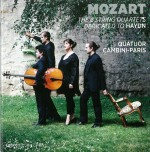 There’s even more great string quartet playing on Mozart – The 6 String Quartets dedicated to Haydn, a 3CD box set featuring the Quatuor Cambini-Paris (naïve AM213). The packaging adds “on period instruments” after the quartet’s name; since the ensemble was founded in 2007 the performers have been playing and recording on period instruments with gut strings and authentic bows, and if you ever needed any evidence of just how satisfying “historically informed” performances can be, here it is.
There’s even more great string quartet playing on Mozart – The 6 String Quartets dedicated to Haydn, a 3CD box set featuring the Quatuor Cambini-Paris (naïve AM213). The packaging adds “on period instruments” after the quartet’s name; since the ensemble was founded in 2007 the performers have been playing and recording on period instruments with gut strings and authentic bows, and if you ever needed any evidence of just how satisfying “historically informed” performances can be, here it is.
The six quartets themselves – numbers 14 through 19, and including the Spring, Hunt and Dissonance quartets – are simply sublime, and the warmth and sensitivity of the interpretations here display them in all their glory. The closeness of the recording means that some extraneous breathing noises are audible at times, but never to the point of distraction.
These are performances that come from the heart and speak to the soul; there wasn’t a single moment when I could imagine these works being played any other way. Add the absolutely terrific booklet notes and this is a set to treasure.
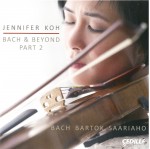 The terrific Jennifer Koh is back with Bach and Beyond Part 2 (Cedille CDR 90000 154), the second of a three-part series of recital programs that Koh initiated in 2009 to explore the history of solo violin works from Bach to the present day. Each recital features two of the Bach Sonatas & Partitas paired with solo compositions from the subsequent centuries.
The terrific Jennifer Koh is back with Bach and Beyond Part 2 (Cedille CDR 90000 154), the second of a three-part series of recital programs that Koh initiated in 2009 to explore the history of solo violin works from Bach to the present day. Each recital features two of the Bach Sonatas & Partitas paired with solo compositions from the subsequent centuries.
Part 1 was reviewed in depth in this column in May 2013. This current issue pairs the Sonata No.1 in G Minor and the Partita No.1 in B Minor of Bach with the Sonata for Solo Violin by Béla Bartók and Frises, a work for solo violin and electronics written in 2011 by the Finnish composer Kaija Saariaho.
Koh, as always, is superb, her intelligence and interpretation always matching her outstanding technique.
The third and final program of the series will apparently pair the remaining two Bach works with Luciano Berio’s Sequenza VIII and the world premiere of John Harbison’s For Violin Alone.
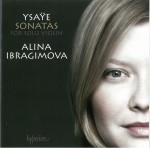 The new Alina Ibragimova CD of the Six Sonatas for Solo Violin by Eugène Ysaÿe (Hyperion CDA67993) is another simply outstanding solo disc. This is the fifth CD of these amazing works that I have received in the past four years or so, and Ibragimova’s is probably the biggest name of the five. She always plays with fire and passion, and her technique is astonishing; nothing in these fiendishly difficult works seems to give her the slightest problem. It’s a truly marvellous disc.
The new Alina Ibragimova CD of the Six Sonatas for Solo Violin by Eugène Ysaÿe (Hyperion CDA67993) is another simply outstanding solo disc. This is the fifth CD of these amazing works that I have received in the past four years or so, and Ibragimova’s is probably the biggest name of the five. She always plays with fire and passion, and her technique is astonishing; nothing in these fiendishly difficult works seems to give her the slightest problem. It’s a truly marvellous disc.
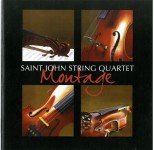 Montage, a collection of Canadian works, is the latest CD from New Brunswick’s Saint John String Quartet (SJSQ005 sjsq.ca). Vancouver’s Anthony Genge (b.1952) is represented by his atmospheric and somewhat minimalist String Quartet No.2, and the late Eldon Rathburn by the brief Subway Thoughts.
Montage, a collection of Canadian works, is the latest CD from New Brunswick’s Saint John String Quartet (SJSQ005 sjsq.ca). Vancouver’s Anthony Genge (b.1952) is represented by his atmospheric and somewhat minimalist String Quartet No.2, and the late Eldon Rathburn by the brief Subway Thoughts.
There are three works by the New Brunswick-based Martin Kutnowski (b.1968): the strongly tonal and melodic six Selections from “Watercolours for Ten Fingers”; Peter Emberley’s Dream, built on a New Brunswick folk song; and Five Argentinian Folk Pieces, drawing on the composer’s native Argentinian heritage.
Little Suite for String Quartet by Talivaldis Kenins (1919-2008) is a solid piece; the Fantasia on Themes of Beethoven by Michael R. Miller (b.1932) is quite fascinating and intriguing; and the Pastorale by Richard Kidd (b.1954) is a lovely final track.
I have just one complaint: the gap between the works is ridiculously short – mostly less than three seconds. You can’t tell when one work has ended and the next one has begun, and the mood of one work doesn’t have a chance to subside before the new work arrives. One wonders why.
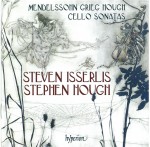 It’s always a pleasure to receive a new CD by the English cellist Steven Isserlis, and his latest recital disc with pianist Stephen Hough of Cello Sonatas by Mendelssohn, Grieg and Hough (Hyperion CDA68079) is no exception.
It’s always a pleasure to receive a new CD by the English cellist Steven Isserlis, and his latest recital disc with pianist Stephen Hough of Cello Sonatas by Mendelssohn, Grieg and Hough (Hyperion CDA68079) is no exception.
The Grieg is a lovely work that Isserlis says has always been popular with cellists, although not necessarily with music critics; the slow movement and the beautiful second themes from the two outer movements in particular are quintessential Grieg. Hough’s Sonata for Cello and Piano Left Hand “Les Adieux” is a quite remarkable work, not least for the range and fullness of the piano part. The Mendelssohn is the best-known sonata of the three, and the performance here is a pure delight.
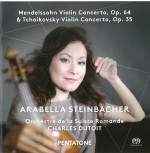 The Mendelssohn and Tchaikovsky Violin Concertos are paired on the new CD from Arabella Steinbacher and the Orchestre de la Suisse Romande under Charles Dutoit (PentaTone PTC 5186 504). Steinbacher has a really lovely tone and plays with undeniable intelligence and great accuracy, but she seems to linger occasionally in the first movements of both concertos, almost to the point of losing momentum at times. There are some lovely moments in the Mendelssohn slow movement and a nice bounce to the finale. The Tchaikovsky has some really thoughtful playing with no sign of stress or strain, but again seems to be held back somewhat in places; the codas, though, always pick up the pace.
The Mendelssohn and Tchaikovsky Violin Concertos are paired on the new CD from Arabella Steinbacher and the Orchestre de la Suisse Romande under Charles Dutoit (PentaTone PTC 5186 504). Steinbacher has a really lovely tone and plays with undeniable intelligence and great accuracy, but she seems to linger occasionally in the first movements of both concertos, almost to the point of losing momentum at times. There are some lovely moments in the Mendelssohn slow movement and a nice bounce to the finale. The Tchaikovsky has some really thoughtful playing with no sign of stress or strain, but again seems to be held back somewhat in places; the codas, though, always pick up the pace.
Review
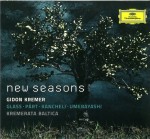
The always interesting Gidon Kremer is back with New Seasons, a CD featuring his own string ensemble the Kremerata Baltica in works by Philip Glass, Arvo Pärt, Giya Kancheli and Shigeru Umebayashi (Deutsche Grammophon 4794817). Kremer notes that he has always been interested in the subject of seasons in music, and feels that the composers here are all “saying something about a better world, creating new seasons that will remain valid forever.”
I’m not sure how much that relates to two of the works – Pärt’s Estonian Lullaby and Umebayashi’s Yumeji’s Theme from the 2000 movie In the Mood for Love are less than six minutes in combined length – but there’s no doubting the relevance of the main work here. Glass’s Violin Concerto No.2 “The American Four Seasons” is an attractive and accessible work in which the familiar repeated patterns and sequences, while still clearly Glass, seem to provide links to Vivaldi.
Kancheli’s Ex contrario is a hauntingly beautiful work in which Kremer and the ensemble are joined by solo cello, keyboard (sampler), bass guitar and performance CD; there’s a clear harpsichord sound, but nothing else from the latter three seems to stand out. Which is just the way it should be.
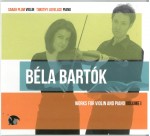 Violinist Sarah Plum and pianist Timothy Lovelace are the partners on Béla Bartók Works for Violin and Piano Volume 1 (Blue Griffin Recording BGR373), which features the Violin Sonata No.2, the two Rhapsodies, and the Romanian Folk Dances and Hungarian Folk Tunes, the latter two works transcribed for violin and piano from the original piano works by Zoltán Székely and Joseph Szigeti. There’s some fine playing here, but it seems a bit pedestrian at times, as if it needs more of a Hungarian bite to really take off. The Rhapsody No.2 is the most successful of the five works.
Violinist Sarah Plum and pianist Timothy Lovelace are the partners on Béla Bartók Works for Violin and Piano Volume 1 (Blue Griffin Recording BGR373), which features the Violin Sonata No.2, the two Rhapsodies, and the Romanian Folk Dances and Hungarian Folk Tunes, the latter two works transcribed for violin and piano from the original piano works by Zoltán Székely and Joseph Szigeti. There’s some fine playing here, but it seems a bit pedestrian at times, as if it needs more of a Hungarian bite to really take off. The Rhapsody No.2 is the most successful of the five works.
Review
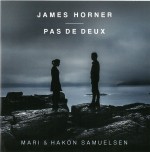
The movie world was shocked by the sudden death of James Horner this past June. Known almost entirely for his numerous movie scores, Horner was classically trained, and Pas de Deux, the debut CD of Mari and Hakon Samuelsen, the Norwegian sister and brother violin and cello duo, marked Horner’s first work for the concert hall in over 30 years (Mercury Classics 481 1487).
The title work is a double concerto for violin, cello and orchestra written specifically for the Samuelsens, and it clearly shows the two musical worlds that Horner could inhabit. I’m not sure how much development of material there is, but it’s a sweeping, rich and sonorous work, with strong themes and some beautiful orchestration. Perhaps inevitably, the movie world seems to predominate, although there are hints of classical influence – some Tchaikovsky-like wind writing, some string passages reminiscent of Vaughan Williams; in particular, the opening of the middle movement sounds for all the world like Henryk Górecki.
Mari Samuelsen goes solo in Arvo Pärt’s Fratres for violin, string orchestra and percussion, and her brother is joined by cellist Alisa Weilerstein in Giovanni Silloma’s Violoncelles, Vibrez! Paul Bateman’s arrangement of Ludovico Einaudi’s Divenire completes the disc. I ruffled some feathers recently with my comments about Einaudi’s music, so let’s just say that this is the somewhat repetitive but oddly beguiling piece with the abrupt ending that you hear a great deal on Classical FM radio, and leave it at that.
The Royal Liverpool Philharmonic Orchestra is conducted by Vasily Petrenko in Pas de Deux, and by Clark Rundell in the remaining three works. Performances by all concerned are excellent throughout.
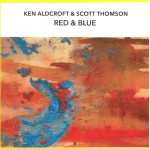 Guitarist Ken Aldcroft and trombonist Scott Thomson present a series of four freely improvised duets on Red & Blue (Trio Records TRP-D503-021, kenaldcroft.com/triorecords.asp). The music is continually shifting and evolving, moving from rapid-fire runs to pointillist exchanges and dialogues in which one offers empathetic support to the other. Aldcroft stays close to the traditional timbre of a lightly amplified jazz guitar, while expanding the vocabulary with percussive effects and skittering chord runs that move in and out of tonal expectations; Thomson’s explorations of the trombone include barnyard noises, extreme upper register effects and very rapid tonguing. However, it’s what they have in common that’s most significant: a willingness to reduce their sounds to whispers and to listen to one another intently and creatively. This is subtle, challenging music that responds best to the same kind of close listening that the musicians bring to it.
Guitarist Ken Aldcroft and trombonist Scott Thomson present a series of four freely improvised duets on Red & Blue (Trio Records TRP-D503-021, kenaldcroft.com/triorecords.asp). The music is continually shifting and evolving, moving from rapid-fire runs to pointillist exchanges and dialogues in which one offers empathetic support to the other. Aldcroft stays close to the traditional timbre of a lightly amplified jazz guitar, while expanding the vocabulary with percussive effects and skittering chord runs that move in and out of tonal expectations; Thomson’s explorations of the trombone include barnyard noises, extreme upper register effects and very rapid tonguing. However, it’s what they have in common that’s most significant: a willingness to reduce their sounds to whispers and to listen to one another intently and creatively. This is subtle, challenging music that responds best to the same kind of close listening that the musicians bring to it.

